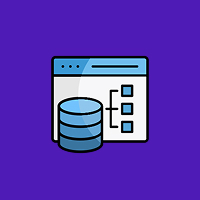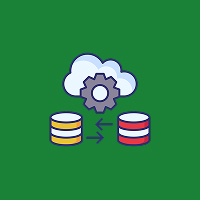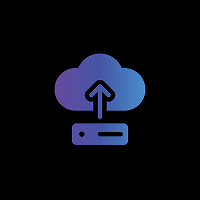Users want the apps to open in a blink and run smoothly in the current times. An iOS app that is fat can lead to slow launching time, usage of space, and poor user experience. Small app size not only improves performance but also increases user interest and stickiness.
Apple provides various tools and techniques to help developers build lightweight and efficient apps without compromising functionality. In this blog, we’ll explore effective strategies to reduce iOS app size and boost load speed, ensuring better performance and an improved user experience.
Why Reducing App Size Matters
Large app sizes can negatively impact performance, user engagement, and even App Store rankings. Here are some critical reasons why optimizing app size is essential:
1. Quicker Downloads & Installation
Smaller application size enables users to download and install the app faster, leading to lower drop-off rates and increased conversion rates within the App Store.
2. Better Storage Efficiency
Since devices have limited storage capacity, users uninstall big applications to gain space. With a lightweight application, users stay active for longer.
3. Better App Performance
An extremely optimized application performs better, leading to less lag, crashes, and battery drain.
4. Better App Store Rank & User Engagement
Apple favors apps with a quality user experience. Smaller load time and minimal app size can take your app to the search result top and suggestions.
Best Practices for iOS App Size & Load Speed Optimization
1. Leverage App Thinning
Apple’s App Thinning downloads only on a user’s device what an app needs. It comprises:
- Bitcode: Pre-compilation of the app in advance for future updates and enhancements.
- Asset Slicing: Delivers only the assets needed for a particular resolution, not wasting storage space with the unnecessary downloads.
- On-Demand Resources (ODR): The ones that get loaded only when they really need to, making the initial size of the app small and reducing the loading time.
Implementation Tip: Provide On-Demand Resources (ODR) to add additional features and downloadable content without making the base app size huge.
2. Reduce Image and Video Assets
Good-quality images and videos account for a large chunk of app sizes. Use these techniques to reduce them:
- Substitute images with new formats like HEIF instead of PNG or JPEG.
- Implement lazy loading to load images only when they are being shown on screen.
- Compress video with H.265 (HEVC) or stream video instead of embedding video.
- Implement vector graphics (SF Symbols) for UI instead of bitmap images.
Implementation Tip: Compress images using optimizers like TinyPNG, ImageOptim, or Squoosh before incorporating them into the app.
3. Optimize Code and Dependencies
Avoiding unnecessary code and dependencies will bulk up your app, and it will be sluggish and inefficient. Save space in apps by
- Refactoring and removing duplicated code.
- Employing Swift Package Manager (SPM) rather than CocoaPods to handle light dependencies.
- Reducing third-party frameworks and libraries.
- Disabling tree shaking (dead code elimination) to eliminate unused functions and variables.
Implementation Tip: Take advantage of tools such as Xcode’s Code Coverage to check and purge unused code.
4. Enable App Compression
Apple already compresses apps automatically, but you can even minimize size further by:
- Taking advantage of Bitcode for Swift, which produces smaller and optimized binaries.
- Turning on Link Time Optimization (LTO) for improved code efficiency.
- gzip or Brotli compressing network responses to reduce data transfer.
Implementation Tip: Use the App Size Report in Xcode to analyze the biggest contributors to app size and optimize them in turn.
5. Reduce Font and Localization Load
Localization and font files may make the app bigger if they are not optimized. Optimize them by:
- Having only necessary fonts and no duplicate font variants.
- Removing unnecessary language packs from the app package.
- Using Apple’s Dynamic Type to reduce the number of custom font files being used.
Implementation Tip: Leverage localization software like XLIFF to successfully translate and package only the language files that need to be installed.
6. Leverage Effective Data Storage & Caching
Poor data handling can inflate app size and slow performance. Enhance storage by:
- Deflating JSON API responses.
- Using SQLite or Core Data to hold structured data instead of big files.
- Caching downloaded data instead of consecutive network requests.
- Cleaning unrequired cache files from time to time to recover space.
Implementation Tip: Adopt a hybrid data storage mechanism with cloud storage and local caching for optimal performance.
7. Optimize UI & Animations
The complicated UI elements and animations are responsible for slowing the app down. Make it slender by:
- Not using large PNGs but employing vector graphics (SF Symbols) instead.
- Getting rid of extraneous UI elements to make the app responsive.
- Employing Metal APIs for improved graphical performance as well as optimization of rendering.
Implementation Tip: Use Instruments & Xcode Profiler to monitor rendering performance and optimize accordingly.
Advanced iOS App Optimization Techniques
1. Utilize Swift Over Objective-C
Fast apps have lesser and more tuned-up binaries than Objective-C. When possible, switch your code base to Swift.
2. Perform Background Intelligently
Evade non-relevant background action to prevent the battery drainage and performance slowness. Use Background Tasks API to execute the background activities.
3. Speed Up Launch Time Optimization More
Improve launch speed by:
- Delays the non-relevant API calls to after the very first screen’s launch.
- Prefetching data needed in order to reduce the time spent by users waiting.
- Using App Launch Profiling in Xcode to identify where the bottlenecks are.
Final Thoughts
Reducing your iOS app’s size and launch time enhances user experience, increases retention, and even App Store rankings. A fast, lightweight app is downloaded more and kept for the long term.
Resource optimization, dependency minimization, and leveraging Apple’s App Thinning and on-demand resource loading enable you to minimize app size significantly without compromising features or quality.
Next Steps:
Implement the above recommendations.
Regularly check app performance using Xcode’s App Size Report and Instruments.
Keep up with Apple’s best practices for app optimization.
By applying these best practices, you’re guaranteeing your iOS app to be efficient, responsive, and user-friendly. Optimize today and create a smooth experience for your users!
Contact Us Today













 Database Development
Database Development












































